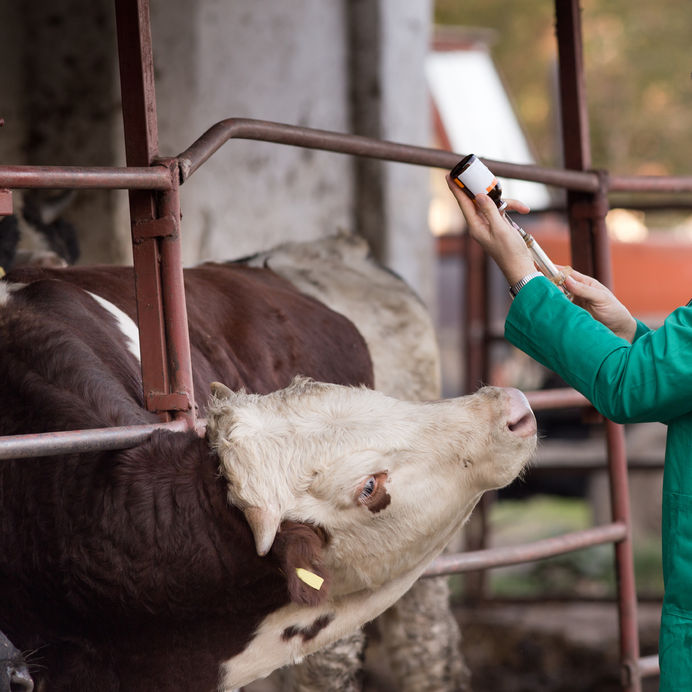According to Prof. Moritz Van Vuuren, a specialist veterinary microbiologist, co-chair of the South African Antibiotic Stewardship Programme (SAASP) and Professor Emeritus, University of Pretoria, scientific concerns over the use of antibiotics in food-producing animals and the perceived link to resistance to antibiotics in bacteria that affect human health are growing and need to be addressed.
While the science is not definitive about the role of antibiotics used in livestock in furthering the development of resistance in human pathogenic bacteria, the collective livestock industries, policymakers and scientists must, together, develop long-term solutions that protect public health and enhance food security and animal welfare.
“Understanding the origins of antibiotic resistance and what this means for human and animal disease management is fundamental to safeguarding our future health across all species and food security. At the same time we must ensure that farmers are able to produce enough affordable food in a sustainable manner while safeguarding animal health and welfare and enhancing food safety. In terms of food production, we have a responsibility to keep animals healthy and to treat sick animals while balancing the long-term effectiveness of antibiotics for human use. Ultimately this is not just about animal health, but about the health of humans, animals and the environment. It is about the creation of safe, nutritious food that ensures the health of people, protects animal welfare and the planet’s limited resources,” says Prof van Vuuren.
Antibiotics in livestock are used for:
• Treating illness when one or a limited number of animals have been diagnosed with a disease.
• Controlling the spread of illness in a herd or flock when disease is present.
• Preventing illness in healthy animals when exposure to disease is likely.
• Promoting healthy growth by ensuring there’s the right balance of bacteria in the gut for improved nutrient utilisation.
Why are antibiotics necessary in food production?
According to the Enough Movement spearheaded by Elanco Animal Health, we simply cannot produce enough healthy and affordable food in an environmentally sustainable manner to feed a future population of nine billion without innovation. This innovation includes advances in animal husbandry and sanitation, disease detection and treatment, animal nutrition, animal comfort, artificial insemination and genetic improvements, vaccines, parasite control, animal housing and productivity optimisations.
Myths and Facts about antibiotics in food production:
Myth: Antibiotic use in animals is leading to the emergence of resistance bacteria that infect humans.
Facts: • Some bacteria are naturally resistant to antibiotics or can develop resistance through mutations or by acquiring resistant genes from other bacteria.
• Increasing evidence suggests that the clinical issues with antimicrobial resistance that we face in human medicine are primarily the result of antibiotic use in people, rather than the use of antibiotics in animals.
Myth: Antibiotics should only be used to treat an animal after it gets sick.
Facts: • Antibiotics are one tool among many that veterinarians and farmers use to protect animal health and well-being that includes preventing the spread of diseases among herds and flocks.
• If one or more animals have been diagnosed with a bacterial infection in a production unit, it is almost certain that the other animals have been exposed to the disease.
Myth: Farmers use antibiotics all of the time and however they see fit.
Facts: • Antibiotics are just one treatment option that farmers consider.
• Farmers work closely with veterinarians and other animal health experts to design comprehensive animal well-being programs that take into account housing, diet, the treatment and prevention of disease, and other animal health factors.
Myth: Antibiotics wouldn’t be needed if animal husbandry improved.
Facts: • Bacteria and other microbes are found everywhere in the environment, and it is virtually impossible to prevent animals from being exposed to disease.
• It is vital that veterinarians continue to have access to appropriate medicines, including antibiotics and other options, to treat, control and prevent illness and disease.
• Farmers and veterinarians have an ethical obligation to use the appropriate treatment needed to ensure the health of the animals in their care.
Myth: Organic producers don’t use antibiotics.
Facts: • Overall antibiotic use is lower in organic units but antibiotics are still used to treat bacterial infections. Failure to treat a sick animal would be ethically unacceptable in terms of animal welfare.
• Organic producers either market treated animals as conventionally raised or sell them to a producer who is not in the organic program. Produce from animals that receive antibiotic therapy can only be marketed after the appropriate withdrawal period has passed to ensure that there are no antibiotic residues, but even then, the animals cannot be labeled as organic.




















